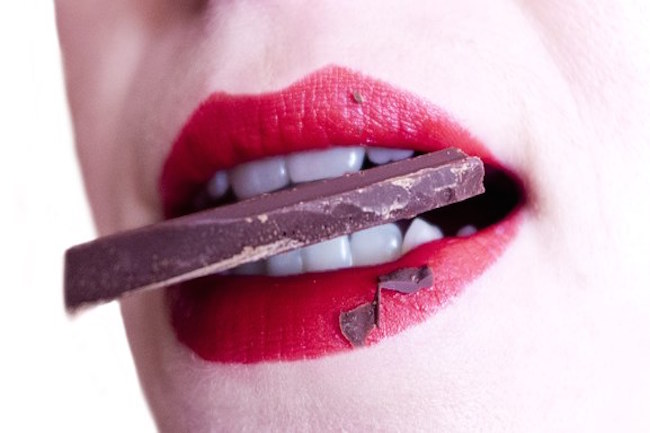Boost memory and mood by treating yourself to some dark chocolate By Zoey Sky for Chocolate.news
Chocolates are a delicious treat that can cheer up anyone who’s having a stressful day. According to a recent study, eating dark chocolates, in particular, can help relieve stress and improve your mood.
Researchers from Loma Linda University led the study, and they presented their findings at the Experimental Biology 2018 annual meeting in San Diego.
Dark chocolate is rich in fiber and antioxidants that can help prevent cell damage due to free radicals. The bitter and earthy treat also improves blood flow, lowers blood pressure, and minimizes the risk of developing cardiovascular disease.
Dark chocolate and brain wave frequency
Scientists found that consuming dark chocolate helps change your brain wave frequency, which can improve memory and reduces stress.
For the study, Dr. Lee Berk, associate dean of research at the School of Allied Health Professions at Loma Linda University, and his fellow researchers used 48-gram bars of dark chocolate made from 70 percent cocoa beans from Tanzania.
Dr. Berk explained that consuming antioxidant-rich foods like dark chocolate helps alter brain frequency via gamma, a beneficial brain frequency. This gamma frequency is “up-regulated, enhanced, [and] turned on” by the antioxidants in dark chocolate.
Brain waves come in different frequencies, similar to radios. The highest is gamma frequency, and it is linked to “the highest level for cognitive processing, for memory, [and] recall.” Gamma waves address complex functions such as stress reduction, information processing, and improving memory.
Dark chocolate is associated with enhanced neuroplasticity, and these positive effects can occur within half an hour of eating chocolates. The increase in gamma frequency brain waves remains effective for at least several hours.
The findings could be applied to improving cognitive function, especially among aging populations. The researchers hope that dark chocolate can help fine-tune these cognitive processes as they deteriorate among the elderly. (Related: Dark chocolate may be nature’s perfect superfood.)
Cacao, cocoa, and chocolates
Cacao seeds, or cacao beans, are found inside cacao pods. These football-shaped fruits grow on trees in hot climates like Africa, Central America, and South America. Cacao beans are harvested from inside the fruit, after which they are dried and fermented.
The beans are then turned into cocoa liquor or cocoa butter. Raw cacao can be eaten on its own or used in baking. Small pieces of raw cacao are called cacao nibs.
To turn raw cacao into a bar of chocolate, milk and sugar are added to cocoa liquor and cocoa butter. On the other hand, raw cacao is turned into cocoa (which you drink as hot chocolate) after it is roasted.
In short, cacao is the raw, less processed or unprocessed version while cocoa is processed.
The different types of chocolate taste differently depending on the varying amounts of butter, liquor, and milk.
- Dark chocolate – Dark chocolate is usually separated into two categories: bittersweet and semisweet. Chocolate with about 35 percent chocolate liquor is considered either semisweet or bittersweet, but labeling depends on the manufacturer. Meanwhile, semisweet chocolate contains more added sugar compared to bittersweet varieties. Very dark chocolate may hold as much as 80 percent chocolate liquor, but this variety of chocolate is very bitter and brittle.
- Milk chocolate – This usually contains 12 percent milk and a minimum of 10 percent chocolate liquor. Higher quality milk chocolates may contain at least 30 to 40 percent cocoa. The rest is made up of sugar, vanilla, or emulsifiers. Milk chocolate is usually sweeter and less bitter than darker chocolates.
- White chocolate – White chocolate lacks any cocoa solids and it contains pure cocoa butter and sugar, or about 20 percent cocoa butter and 14 percent milk, cream, or milk solids and added vanilla. White chocolate is very sweet and creamy, yet it lacks the fruity and bitter complexity of regular chocolate.
Overall, anything above 70 percent cacao is considered “dark chocolate,” which is also the percentage used in Dr. Berk’s study.
Antioxidant-rich dark chocolates
Dark chocolate with at least 70 percent cocoa or cacao is full of beneficial antioxidants. The decadent treat even surpasses the antioxidant content of blueberries, cherries, and other fruits and vegetables.
To make the most of dark chocolate’s health benefits, eat chocolate with about 85 percent cacao. This type of dark chocolate is very bitter, but it contains more cacao and less cane sugar.
Eating dark chocolate with 85 percent cacao lets you enjoy antioxidant and anti-inflammatory benefits minus the side effects of consuming added sugar in other types of chocolates.
Experts recommend daily servings of about one to two ounces of dark chocolates for best results. Consume dark chocolate in moderation to enjoy its benefits, such as improving memory and boosting your mood.




